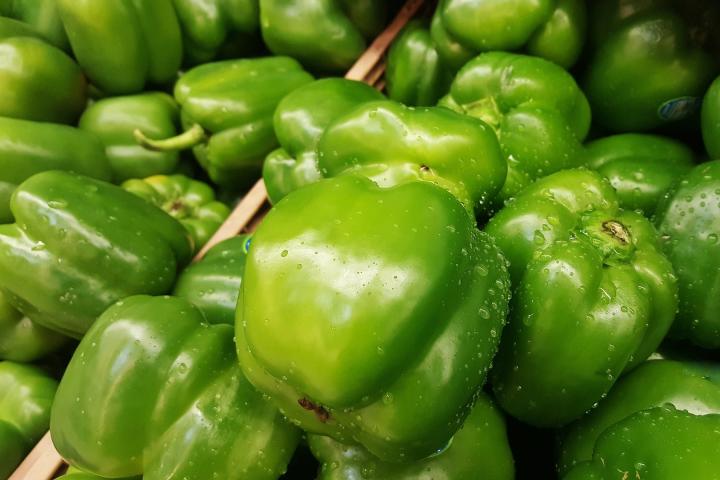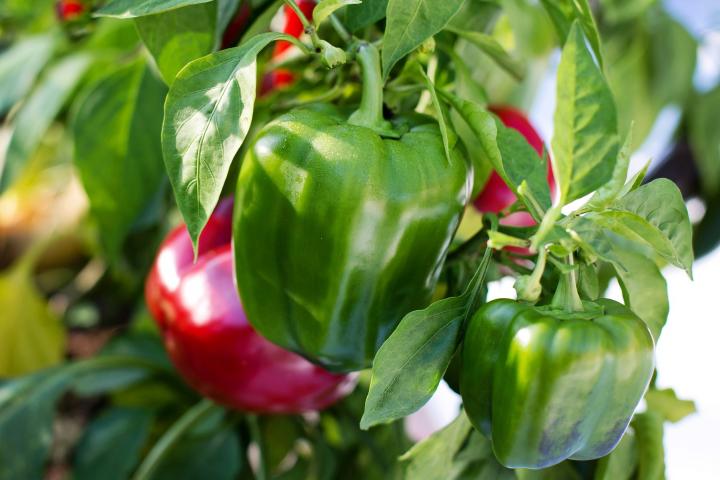
Grow sweet, colorful bell peppers with ease—from planting to harvest!
Cooking Notes
Peppers are excellent with almost anything: sandwiches, scrambled eggs, pizza, salads, and dips.
We also enjoy cooking peppers, whether in a beef stir-fry, as smoky roasted peppers, or in meat- and rice-stuffed peppers.
Plus, peppers can be pickled! See how to make pickled peppers!
ADVERTISEMENT
last year (about the time the original question was asked) I had a bunch of peppers that I did not want to loose. I dug up the plant, root ball and all, and put them in large nursery pots I had saved. they were in shock about two days because it had been cool, but the fruit all ripened. some of the plants were still (sort of) alive at the end of the winter but did not appear to try regrowing. this year I am going to plant some in pots a little later in the season but keep them in the garden so they can be pollinated before winter- that late in the year the bees and other pollinators are trying to build up their food stores for the winter with whatever is around and will be glad for the food. plus can be brought into a garage or other unheated space overnight if there is a frost coming and put back out the next morning
By the way I also dug up the marigolds and geraniums in the garden because they were still blooming, and put them in clean cat litter boxes, saved aluminum buffet pans (the ones that go over the burner- double up for strength), and saved plastic trays from hamburger. at the holidays I put cloth around them and had nice arrangements on display
Online friends claim both peppers and the individual plants which bore them come in two genders which can be identified by the number of lobes on the peppers and the appearance of the seeds inside them. This seems botanically questionable and not provable except by chromosomal studies. Does anyone know about this for sure?
A hot topic, it appears, on the Web. No. It’s a hoax. Pepper plant flowers contain both mail and female reproductive parts, and so the developing fruit is neither male nor femaile. The number of lobes does not affect flavor. Don’t believe everything you read on the Web…but you can believe this.
I have grown some in pots. Strangely some of the fruit has the colour of the aubergine. Why is this?? Please!!
They may be purple, Ken, because they ARE purple peppers! If you started them from seeds, we can not explain the confusion; the packet should have been marked…or it was and you did not know. If you bought them as seedlings, it’s possible that the plant stick was moved from other peppers inadvertently; it happens occasionally.
They are different from other bells in so far as the contain a pigment called anthocyanin, which give them their inky color. They may be slightly more bitter than red, yellow, or orange bell peppers…or that may be a matter of taste.
Harvest, eat, and enjoy!
Mid October the first part of October we had 2.5 inches of rain. Now mid October I'm picking my peppers they have water in side and they have black spots and areas in side, they are solid are they OK to use?
It sounds likely that they are diseased. In that case, it may be best not to eat them since it is not known what exactly is infecting the fruit. Even if the spotted areas are removed (cut at least 1 inch further out from the affected area), unblemished areas may still harbor fungus, bacteria, or viruses that may cause trouble, depending on the pathogen. Quality will likely not be as good either, perhaps affecting taste etc. Unfortunately, when in doubt, throw it out.
I have 3 plants. Each produced about 6 peppers each. They stopped yielding about 3 weeks ago, but now all 3 have some flowers and more baby peppers. Is it common to get a 2nd harvest?
I too have had a second Harvest from my Bells!
This second Harvest has produced more peppers than the first and seeming bloomed after a long hot drought, so perhaps the more temperate weather has caused a second Harvest?
Had you experienced cool or hot temperatures earlier and now temperatures have moderated? Nighttime temperatures below 60F or above 75F can hamper fruiting. Also, if you had very hot daytime temperatures, such as 90F or above, that can cause blossoms to drop or pollen to become sterile, reducing fruit production until plants recover. Ideal daytime temps are between 70 and 80 (hot peppers can take about 5 degrees higher). Drought or other stress, too much nitrogen, or other factors can also discourage fruiting.














